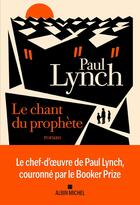-
Date de parution : 01/01/2014
-
Editeur :
Achcbyz
-
EAN : 9782916716473
-
Série :
(-)
-
Support :
Papier
Résumé:
One of the most mysterious texts from the Second Byzantine Iconoclasm (815-843) is the so-called Synodical Letter, purportedly sent by Patriarchs Christopher of Alexandria, Job of Antioch, and Basil of Jerusalem to Emperor Theophilos in 836. The earliest reference thereto is dated 945, whereas... Voir plus
One of the most mysterious texts from the Second Byzantine Iconoclasm (815-843) is the so-called Synodical Letter, purportedly sent by Patriarchs Christopher of Alexandria, Job of Antioch, and Basil of Jerusalem to Emperor Theophilos in 836. The earliest reference thereto is dated 945, whereas the oldest extant manuscript fragment is written in the ninth-century uncial. But was it a real missive or a pious forgery ? Several Greek texts deriving from the lost original do not provide sufficient ground for a confident answer. Among the main problems is the lack of protocol elements indispensable for a document of this kind. Those elements, however, are present in the Slavonic text entitled Mnogoslonyj Svitok, which corresponds to ????st???? t?µ?? in Greek. A thorough scrutiny has revealed that this is the closest version we possess to the original Letter. The Slavonic, besides indications of place (Jerusalem) and date (836) within the main text, contains two solid termini ante quos, 837 and 838, and names the actual compiler of the Letter - a certain monk Basil, who can very well be identical with the hagiographer Basil of Emesa. The latter in his Life of Theodore of Edessa claims to have attended a synod in Jerusalem, presumably that of 836. This book presents a critical edition of the Slavonic text together with corresponding Greek fragments, English translation, and Glossary. Russian translation is also attached.
Donner votre avis














